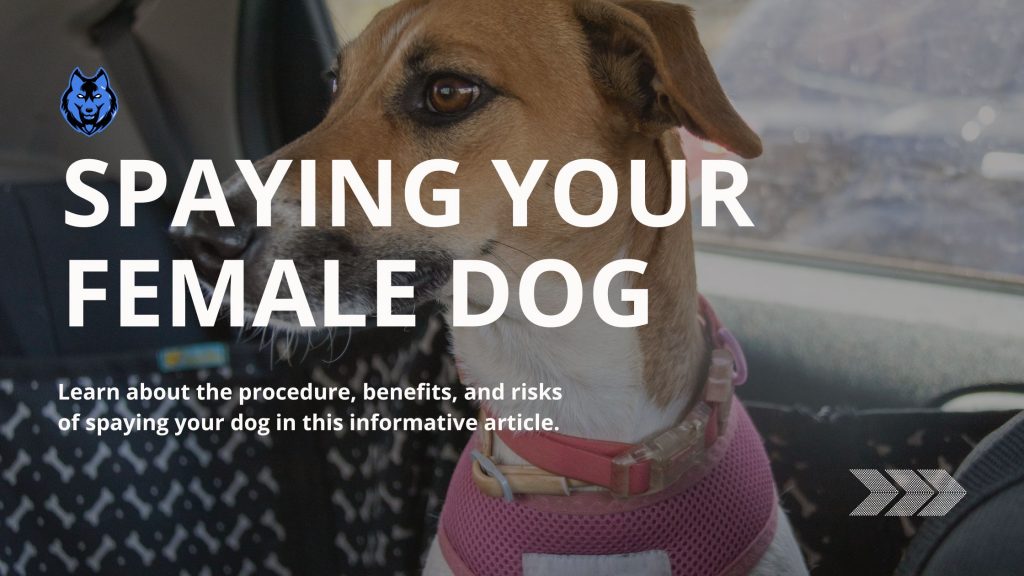Introduction:
If you’re a dog parent, you’ve probably heard about spaying your female dog. Spaying, also known as ovariohysterectomy or female dog sterilization, is a surgical procedure that removes the ovaries and uterus of a female dog to prevent pregnancy. Not only can spaying help prevent unwanted litters, but it can also improve your dog’s overall health and prevent certain diseases.
In this article, we’ll go over everything you need to know about spaying your female dog, including the procedure, benefits, and risks.
The Procedure:
Spaying is a routine surgery that is performed under general anesthesia. Before the surgery, your veterinarian will perform a physical exam and may recommend blood work to ensure your dog is healthy enough for the procedure.
During the surgery, your dog will be under general anesthesia, and her reproductive organs will be removed. The procedure typically takes about 30-60 minutes, depending on your dog’s size and health. After the surgery, your dog will need to be monitored for a few hours to ensure she wakes up from anesthesia properly.
What to Expect After Surgery:
After the surgery, it’s important to keep your dog calm and quiet for a few days. Your veterinarian will provide you with specific postoperative care instructions, but generally, you should limit your dog’s activity and keep her from jumping or running for 7-10 days after the surgery.
Your dog may experience some discomfort and may need pain medication. You should monitor your dog’s incision site for any signs of infection, such as redness or discharge. Your veterinarian will schedule a follow-up appointment to check on your dog’s progress and remove the sutures.
Most importantly, do not get worried and give space to your dog.
Benefits of Spaying Female Dogs:
Spaying your female dog has numerous benefits, including:
- Prevention of unwanted pregnancies and litters
- Reduction of the risk of certain types of cancer, such as mammary cancer
- Decreased risk of uterine infections, such as pyometra
- Reduction of unwanted behavior, such as roaming or aggression
- Helping control pet overpopulation
Risks of Not Spaying Dogs:
Not spaying your female dog can also have risks, including:
- Increased risk of certain types of cancer, such as mammary cancer
- Risk of uterine infections, such as pyometra
- Risk of unwanted behaviors, such as roaming or aggression
- Contributing to pet overpopulation
Conclusion:
Spaying your female dog is an important decision that can benefit both your dog’s health and help control pet overpopulation. It’s a routine procedure that is generally safe and has numerous benefits. However, as with any surgery, there are some risks involved. Talk to your veterinarian about whether spaying is right for your dog, and if so, when the best time to spay her is. With proper care and attention after surgery, your dog can recover quickly and enjoy a healthier, happier life.



